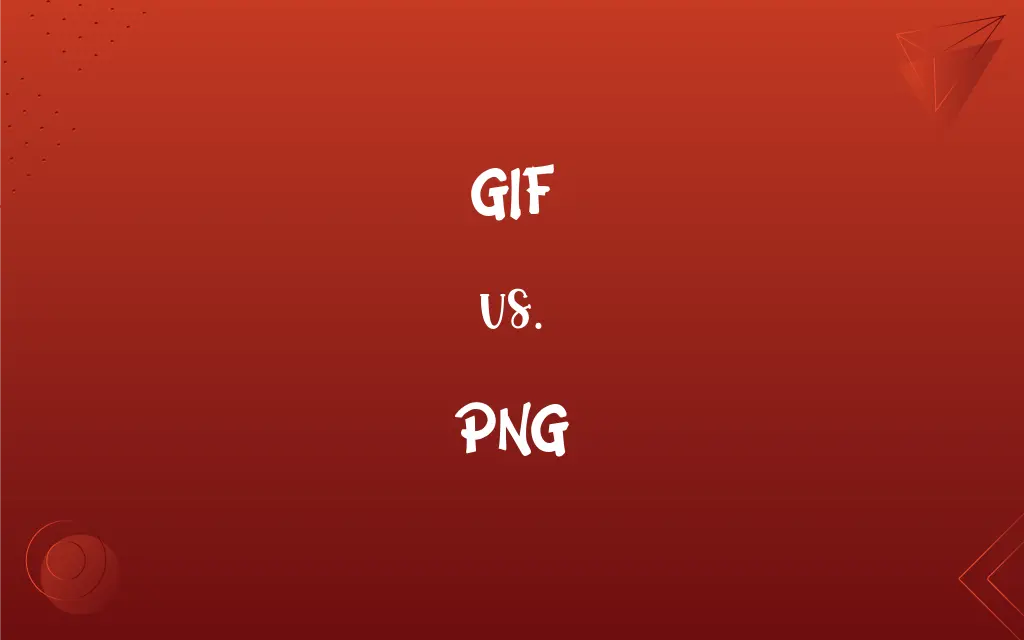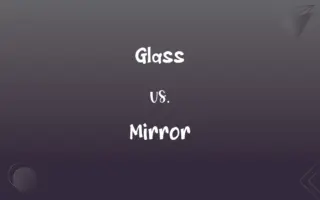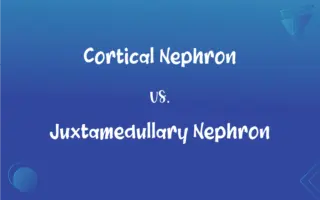GIF vs. PNG: What's the Difference?
Edited by Aimie Carlson || By Harlon Moss || Published on January 17, 2024
GIF (Graphics Interchange Format) supports animation and limited colors; PNG (Portable Network Graphics) offers higher quality static images with better transparency handling.

Key Differences
GIF, short for Graphics Interchange Format, is widely used for animations and simple graphics with a limited color palette of 256 colors. PNG, or Portable Network Graphics, is designed for transferring images on the internet, not limited by color but not supporting animation.
GIFs support 8-bit color and simple binary transparency, making them suitable for simpler images with fewer colors. PNGs offer a broader range of color depths (up to 24-bit) and more sophisticated alpha channel transparency, ideal for complex images with varying levels of opacity.
GIF uses lossless compression but is limited by its color palette, potentially reducing image quality. PNG also employs lossless compression but without a color limit, resulting in higher quality images, especially for photographs and detailed graphics.
GIFs are popular for short animations, logos, and simple web graphics due to their small file size and wide support. PNGs are preferred for high-quality images, web graphics requiring transparency, and situations where image detail is crucial.
GIF format has been around since 1987, an early format for web graphics, while PNG was developed in the mid-1990s as an improvement over GIF, especially in terms of color and transparency.
ADVERTISEMENT
Comparison Chart
Color Depth
8-bit (256 colors)
Up to 24-bit, supports more colors
Transparency
Basic binary transparency
Advanced alpha channel transparency
Animation Support
Supports animations
Does not support animation
Compression
Lossless, but limited by color palette
Lossless, no color limitation
Ideal Usage
Simple graphics, animations
Detailed images, complex transparency
ADVERTISEMENT
GIF and PNG Definitions
GIF
A format for animated graphics with limited color range.
The website used a GIF for its interactive banner.
PNG
Supports advanced alpha channel transparency.
The PNG image seamlessly blended with the website's background.
GIF
Suitable for simple web graphics and animations.
He shared a humorous GIF on social media.
PNG
Uses lossless compression without color limitation.
The digital artist preferred PNG for its color accuracy.
GIF
A popular format for creating and sharing short animations.
Animated GIFs are often used in digital advertising.
PNG
Ideal for storing digital photographs and complex graphics.
The graphic designer saved the artwork as a PNG for its clarity.
GIF
Supports basic transparency in images.
The logo was saved as a GIF with transparent background.
PNG
A format for high-quality images with good transparency.
The photographer saved the image as a PNG to preserve quality.
GIF
Uses lossless compression, but limited to 256 colors.
The GIF format was chosen for its small file size.
PNG
Suitable for detailed graphics and web images.
The website's header was a crisp and clear PNG file.
GIF
A raster-based format for storing files of color graphics.
PNG
(computing) nodot=1; Portable Network Graphics, an open protocol for digital images.
GIF
An image or animated clip recorded in such a format.
GIF
The Graphics Interchange Format, one of the most popular standardized formats for storing graphic data in binary computer files. The standard has been revised several times, and includes provisions for interlacing and animating images. Its disadvantage is that it can store only 256 colors. Compare JPEG.
GIF
An image stored in GIF{1} format, or the file in which the image is stored; as, he sent three GIF's with lovely pictures of his children.
GIF
Alternative case form of GIF
GIF
Alternative case form of GIF
GIF
If.
FAQs
Do PNGs support animation?
No, PNGs do not support animation.
What does PNG stand for?
PNG stands for Portable Network Graphics.
Are GIFs suitable for high-quality images?
GIFs are not ideal for high-quality images due to their limited color palette.
What kind of transparency does GIF support?
GIF supports basic binary transparency.
What does GIF stand for?
GIF stands for Graphics Interchange Format.
Are PNGs better for high-quality images?
Yes, PNGs are better for high-quality images, especially with transparency.
What transparency does PNG support?
PNG supports advanced alpha channel transparency.
When was the PNG format developed?
The PNG format was developed in the mid-1990s.
Are PNGs good for gradients?
Yes, PNGs can handle gradients well with their wider color range.
Is GIF compression lossless?
Yes, but limited to 256 colors.
Can GIFs be animated?
Yes, GIFs are commonly used for animations.
When was the GIF format created?
The GIF format was created in 1987.
Can GIFs display gradients well?
GIFs are not ideal for gradients due to color limitations.
Why choose PNG over JPEG?
PNG is preferred for images requiring transparency and no quality loss.
Is PNG compression lossless?
Yes, PNG offers lossless compression without color limits.
Can GIFs have transparent backgrounds?
Yes, but only as a simple on/off transparency.
Can PNGs have transparent backgrounds?
Yes, PNGs handle transparent backgrounds with varying opacity levels.
Are GIFs good for digital photographs?
No, GIFs are not ideal for photographs due to color limitations.
Are PNGs suitable for storing digital artwork?
Yes, PNGs are excellent for digital artwork due to their high quality and transparency support.
Why use a GIF instead of a video?
GIFs are smaller in file size and widely supported on the web.
About Author
Written by
Harlon MossHarlon is a seasoned quality moderator and accomplished content writer for Difference Wiki. An alumnus of the prestigious University of California, he earned his degree in Computer Science. Leveraging his academic background, Harlon brings a meticulous and informed perspective to his work, ensuring content accuracy and excellence.
Edited by
Aimie CarlsonAimie Carlson, holding a master's degree in English literature, is a fervent English language enthusiast. She lends her writing talents to Difference Wiki, a prominent website that specializes in comparisons, offering readers insightful analyses that both captivate and inform.







































































